
Editor’s Note: This story originally appeared on LawnStarter.
Tired of your yard looking as flat as yesterday’s soda? Discover tree shapes that’ll make your yard pop. From round trees to columnar ones, there is a tree for every taste and yard size.
Whether you’re wishing for a leafy fortress for privacy or a shady oasis to kick back and relax, these trees can help you achieve the yard you’re looking for.
Choosing the right tree shape isn’t just about aesthetics, it’s about function too.
Want to know which shape will stand tall and proud, providing the perfect canopy for your afternoon siestas? Or perhaps you’re after a dramatic sight of a contorted tree shape to add a touch of intrigue to your landscape? Continue reading and discover which tree shape is your yard’s soulmate.
1. Round or Oval
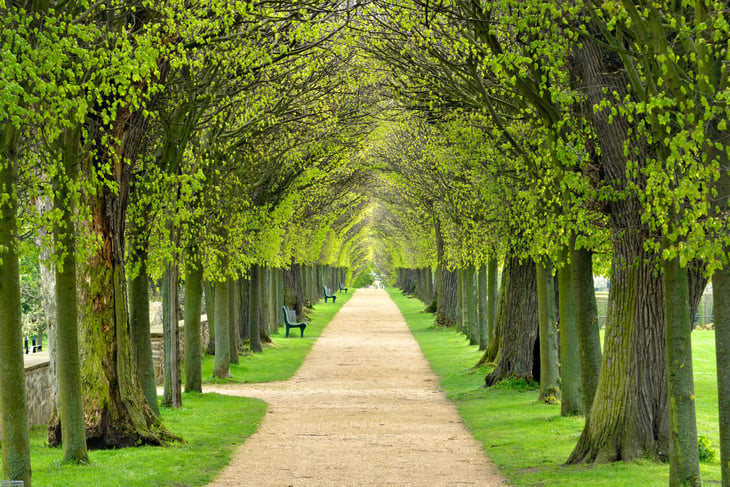
Round and oval-shaped trees have a center trunk with branches that form a rounded or oval crown on top. They provide a traditional look for your yard. These trees are champions at casting shade, thanks to their foliage that can be so thick it hides the branches within.
These are some examples of round and oval-shaped trees:
- Red oak
- European linden
- Paperbark maple
- Sugar maple
2. Columnar

Columnar trees are the bodyguards of trees. They are tall and skinny but strong. They have slender forms reaching skyward. These evergreen and deciduous trees are the go-to choice when you want a little seclusion in your outdoor space.
They have upright branches that add a touch of vertical elegance to landscapes. Despite their height, they’re narrow and space-savvy, making them a good option for tight spaces where every inch counts.
These are some examples of columnar-shaped trees:
- Italian cypress
- Columnar apple or peach
- Fastigiate English oak
- Lombardy poplar
- Emerald arborvitae
3. Spreading
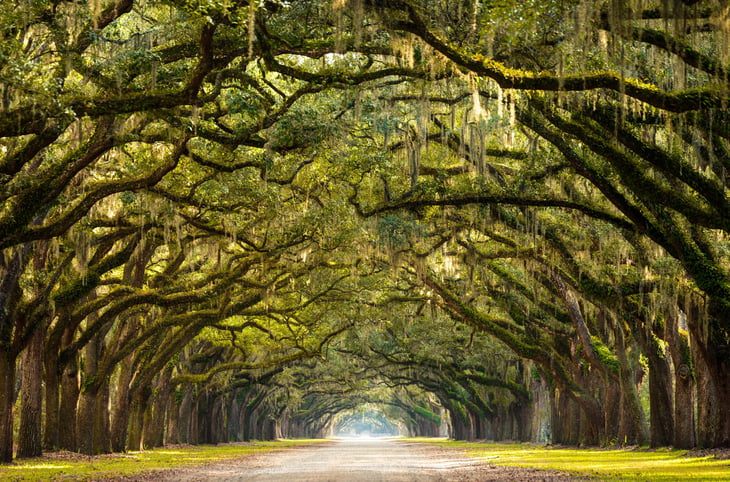
Spreading trees stretch out horizontally to craft a sprawling canopy that offers a nice green visual panorama. Their open, irregular shape creates a welcoming aura, often wider than they are tall, making them versatile additions to any landscape.
Whether they stand tall or grow into smaller, bushier forms, spreading trees create dappled shade and soften any building’s hard lines. With their expansive nature, these trees paint a picture of harmony in any environment.
These are some examples of spreading-shaped trees:
- Live oak
- London plane
- Dogwood
- Ginkgo
4. Vase-Like

Vase-like trees have a unique charm, with their vertical branches cascading outward, sculpting the crown into a shape reminiscent of a vase. This elegant form not only provides shade but also maintains a modest height, making them ideal for areas where space is a consideration.
Their low-profile nature makes vase-shaped trees perfect candidates for lining streets, as they don’t obstruct sight lines, ensuring both safety and aesthetic appeal. These trees blend practicality with beauty, offering a subtle yet striking presence wherever they’re planted.
These are some examples of vase-like trees:
- American elm
- Green vase zelkova
- Crepe myrtle
- Pin cherry
5. Pyramidal

Pyramidal trees display a silhouette that is wider at the base and pointed at the crown. Their appearance commands attention, but it comes with a warning: These types of trees require ample space to fully unfurl their width and reach their potential.
These are some examples of pyramidal tree shapes:
- Blue spruce
- Deodar cedar
- Leyland cypress
- Douglas fir
- Lodgepole pine
6. Weeping
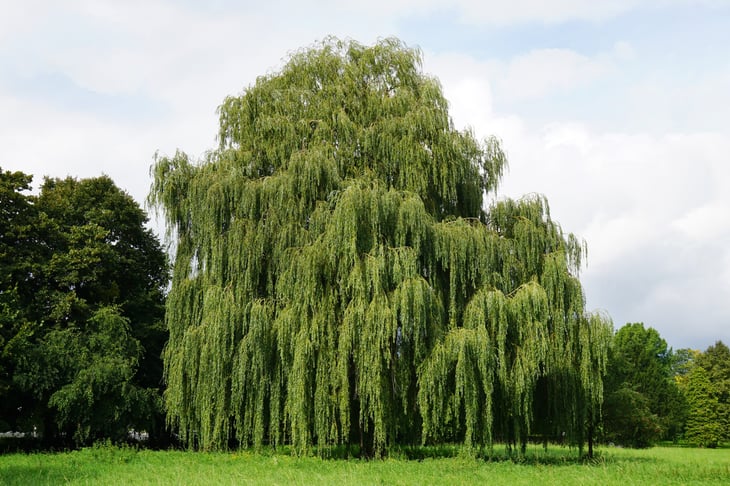
Weeping trees can infuse a garden with a subtle yet profound beauty. They have long, flexible branches draping downward that can caress the earth below.
Weeping-shaped trees evoke a sense of tranquility and serenity. Their cascading branches create a captivating spectacle, transforming any outdoor space into a space of calm.
However, it’s essential to consider their placement carefully: Weeping trees shouldn’t be planted near walkways or streets where their branches might obstruct passage or require frequent pruning.
Examples of weeping trees:
- Weeping willow
- Weeping cherry
- Weeping larch
- Weeping beech
7. Umbrella-Shaped

Umbrella-shaped trees have broad, sprawling canopies that look like an open umbrella. If they are big enough they can create ideal shading for sitting areas or patios, ensuring a clear view underneath.
Umbrella-shaped trees examples:
- Samanea saman
- Catalpa umbrella
- Umbrella thorn acacia
8. Globe-Shaped
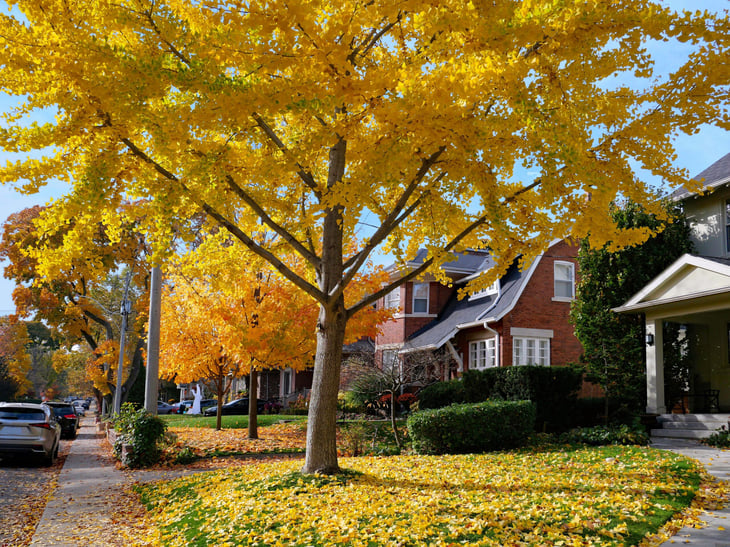
Globe-shaped trees grow into dense, spherical forms. Their compactness gives them a charming elegance, making them ideal candidates for ornamental focal points in any landscape. These trees can add a touch of refinement to gardens, parks, and other green spaces.
Globe-shaped trees grow into dense, spherical forms. Their compactness gives them a charming elegance, making them ideal candidates for ornamental focal points in any landscape. These trees can add a touch of refinement to gardens, parks, and other green spaces.
These are some examples of globed-shaped trees:
- Robinia
- Globe Norway maple
- Globe blue spruce
9. Twisted and Contorted

Twisted and contorted trees have irregular branches that twist and turn like living sculptures. Each branch seems to have a mind of its own, creating a mesmerizing display of chaos and beauty.
Twisted and contorted trees add a touch of artistic flair, reminding us that beauty can be found in the most unexpected places.
These are some examples of twisted and contorted trees:
- Contorted filbert
- Twisted willow
10. Multi-Trunked

Multi-trunked trees sprout several main trunks rising from the earth. Their diverse trunks form a captivating sight, adding a rustic touch to any landscape. These trees bring a dynamic energy to their surroundings, breaking away from the single-trunk norm.
Example of multi-trunked trees:
- River birch
- Acer griseum
- Lacebark elm
How to Choose the Right Tree Shape for Your Yard
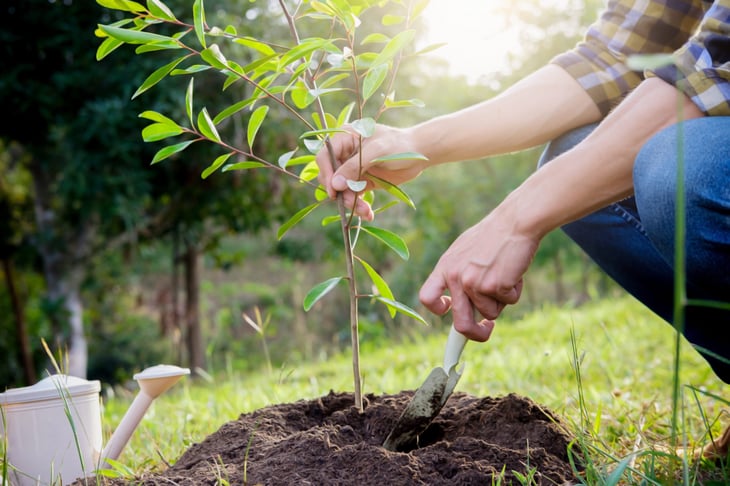
Choosing the right tree shape for your yard is a process that takes into account several factors. Here are some tips to consider to make the best decision:
- Purpose: Determine the purpose of your tree. Are you looking for a splash of color? Maybe a vase-like flower tree is the best option. Are you aiming to create a privacy screen? Think of columnar trees. Do you want a focal point for your garden? The answer could be a twisted or weeping-shaped tree.
- Sun exposure: Do you want more shaded areas? Opt for spreading or umbrella-shaped trees. But if you prefer more sunlight in your space, choose columnar or pyramidal trees.
- Amount of space: Evaluate the space available in your yard. Columnar trees are ideal for narrow areas as they provide height without taking up excessive ground space. For more expansive settings, rounded or pyramidal trees can create a fuller, balanced appearance.
- Maintenance: Consider the time and effort you’re willing to invest in tree maintenance. While all trees require care, some shapes have lower maintenance needs.
- Environmental adaptability: Ensure your chosen trees can thrive in your local climate and soil conditions. Consult with local arborists or nurseries for guidance on tree species that are well-suited to your region (Check these tips for choosing a tree at the nursery).
- Envision the future of your yard: Plan ahead by considering the mature sizes, heights, and widths of your chosen tree. This ensures the landscaping of your property aligns with your long-term vision for your yard.



